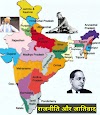Black Ice Roads | How to
Drive on Black Ice
Ice on the road poses a
serious concern to drivers throughout the winter months in addition to snow. In
particular, black ice is hazardous because to its lack of visibility (the term
"black ice" being somewhat of a misnomer, as the ice is transparent).
However, by comprehending and being aware of this winter concern, you may
safeguard yourself.
Understanding the black ice
It is a coating of hard
snow that develops on surfaces (particularly roads, sidewalks, and driveways)
as a result of a light freezing rain or as a result of snow, water, or ice
melting and then refreezing on those surfaces. Although it is actually clear,
"black ice" is so named because it frequently resembles the rest of
the pavement on the road. Black ice may blend in with any surface since it
doesn't produce bubbles as it forms.
Black ice is Dangerous
Black ice is dangerous
precisely because it's hard to detect in advance.
Driving on black ice is
like driving on the glass. There is less friction or there may be zero friction
between the tyre and the surface. In black ice conditions, if vehicles lose
traction, there is no control over the vehicle, which may turn into a fatal
crash, or you may fall into gorges or downhill hills.
When to expect black ice
Black ice tends to form in the early morning and evening when temperature is nearly freezing point. During the daylight hours, the road is usually warmer due to sun and less likely to create black ice. But remember: less likely does not mean "it will never"
- Always be prepared for the possibility of encountering with black ice.
- Keep an eye out for the black ice warning sign on the road. If you are driving and see cars suddenly swerve for no apparent reason, black ice is a likely cause for that.
- Know how to notice the black ice - Although black ice is translucent, it can occasionally be seen in the proper lighting if you are looking for it. Almost often, sheets of extremely smooth, extremely shiny black ice appear. Your warning sign of impending black ice is this glossy surface. You may be about to drive on black ice; don't panic, follow the steps below. If the bulk of the road you're driving on looks to be a drab black hue but the area just ahead of you appears shining, you may be about to drive on black ice.
- While this method for detecting black ice won't work at night, there is enough light available at dawn, midday, and dusk to see.
If you're not familiar
with this shiny aspect, compare the black spray paint on a fine new car to the
black paint job on an older, neglected car. Black ice won't always be visible,
but it won't hurt to seek for it. In challenging driving circumstances, it
might also assist you in maintaining concentration. Just make sure to pay
attention to the rest of your surroundings as well.
Driving practice on slippery surfaces
If at all feasible, practise driving on ice in a secure environment with an experienced winter driver. Locate a beautiful, sizable, vacant parking lot that has ice on it. On ice, drive. On ice, practise braking. Recognize how your automobile handles and feels in various circumstances. If you have ABS, be aware of how it feels when you brake. In fact, practising this in a safe environment can be a lot of fun!
Combat a black ice situation
Your initial response
should be to keep your cool and refrain from retaliating if you do touch black
ice. As a general rule, let the car pass over the ice with as little
intervention as possible. Keep the steering wheel straight and avoid applying
the brakes. Turn the steering wheel very gently in the direction you sense
your car's rear end moving if you detect this. You run the risk of skidding or
spinning out if you try to fight it by steering the other way (see below for
what to do if this happens).
Slow down, decelerate
Lift your foot entirely off the gas and maintain your current position with the steering wheel.
- Do not touch the brakes. Slowing down will give you more control and minimise unnecessary harm. You'll probably slide if you do that. Black ice patches typically don't extend farther than 20 feet, therefore the aim is to slide across the ice in the direction the driving wheel is facing (6 metres).
- Put your vehicle in low gear if you can.
- You'll have more control if you use low gears.
- Look for traction spots.
Although black ice is essentially invisible, you might be able to move near pavement patches that provide better traction. Areas with textured ice, areas covered in snow, and locations with.
Remain calm if you skid or lose traction.
Hopefully, you're moving slowly now, which will make things simpler. Though it's not always the case, black ice is typically patchy, so hopefully your tyres will soon get traction. Although some braking will be required if the vehicle is significantly skidding, use the least amount of braking possible as follows:
- If your car has anti-lock braking system (ABS), all you have to do to stop it from skidding is press your foot firmly on the brake.
- If your vehicle lacks ABS, gently pump the brakes as you skid.
- Drive the car's wheel in the desired direction at all times.
- In the event that you stray from the path, make an effort to strike objects that will inflict the least amount of harm.
A yard, an empty field,
or a fluffy snowbank are the best places to turn. Even if you might not have
much of a choice, you can at least try.
Stay composed after the contact with the black ice.
Even while you might feel a little frightened, you shouldn't ever start to panic. Drive as slowly as you can if you must continue. Flash your lights constantly to let other cars know that you are driving slowly.
Get off the road or stop driving as soon as possible
It is preferable to put off dealing with an accident by waiting a while at a rest area, eatery, or even by the side of the road until the road staff can sand and/or salt the roads. This will give you an opportunity to regain your composure and feel less anxious. Enjoy a hot beverage while you unwind.
- If there is a pileup: Black ice and/or ice can create incredibly dangerous conditions that can result in several car accidents on a highway very rarely. You must decide immediately whether it is safer to stay in your car, where you have some safety protection, or to get out, where you can flee other collisions but will have to walk on icy surfaces, in subfreezing temperatures, and with other automobiles spinning out of control around you. Think about where you are, how fast you can get there, where you are geographically, how warm you are, and how strong you are.
- Prevent or minimize future encounters with black ice
- You can take a number of precautions to lessen the likelihood of being caught off guard by black ice. The most important thing is still to learn how to drive on it, but here are some more suggestions:
- Move cautiously. Avoid attempting to drive fast in icy conditions because doing so will negate any control you may have had over the black ice.
- Avoid tailgating or following too closely behind another car.
- Make sure your windscreen is free of ice, snow, dirt, and anything else that can obstruct your ability to see out of it. You might be tempted to use your windscreen wipers to clear snow and ice off your car's windscreen. The wipers and washer fluid may appear to function, but they do not. In fact, you risk damaging your windscreen wipers if you try to remove ice from the windscreen with them. Before starting your automobile, remove the ice from the windscreen using an ice scraper.
- Early in the afternoon, turn on your headlights to assist you see any potential sheen from black ice.
- Check the tread on your tyres. Accidents are caused by worn tyres in all weather, and on black ice, you won't have traction when you need it. Additionally, think about fitting winter tyres. Keep in mind that you should NEVER use your cruise control while driving in possibly icy weather.
- If you have ABS brakes, be familiar with how they feel when they engage so that you don't panic. You should also be aware of the signs of slick roads, even if your car is still in control.
- Black ice is dangerous and can make you slip when you're riding or walking. Cyclists must exercise particular caution because slipping could put them in the line of oncoming vehicle and truck traffic.
- Install snow tyres before it is cold enough to produce black ice. This is particularly crucial if you're driving outside of your city and are unfamiliar with the roads and weather.
- Do not use the phone or interfere with the radio. You should pay attention to the road to avoid accidents.
Avoiding unexpected
movements while driving on ice is a smart tip. You can lose traction by turning
your tyres quickly, accelerating, or braking. Consider placing an egg between
your foot and the gas and brake pedals as a method to modify your driving
technique for winter driving. Keep the fictitious egg whole as a top concern.
You'll soon notice that you are driving more cautiously. Try to stay at home
and refrain from driving altogether if the weather is poor and there is a
chance that there may be black ice.
Warnings
- Due to their high centre of gravity and inherent instability, 4x4 vehicles, SUVs, vans, trucks, and large Pickups are easily prone to rolling over as a result of an ice slide followed by an abrupt traction on the road.
- In snowy or slippery conditions, never utilise cruise control; you do not want this to occur. You must always be in complete control.
- If you are unsure whether your car is skidding from the front or the back, "If you observe the front end of your automobile going left or right, make a very slight turn of the steering wheel in the 'opposite' direction," says the advice. This is equivalent to saying: "If you feel your car's rear end slipping left or right, make a very mild turn of the steering wheel in the "same" direction"
Keep in mind that
traction at zero percent remains traction at zero percent. Once you lose
traction, it doesn't matter if your car has all-wheel drive, four-wheel drive,
or is an SUV; the automobile won't aid you. No matter what kind of vehicle you
are driving, do so carefully and safely.
Conclusion
Low speeds should be used
to gently accelerate the car, and you should change to a higher gear as soon as
you can. Reduce your speed, be alert for any dangers, and allow yourself enough
space to turn and brake. Use the second gear rather than the first to lessen
the likelihood of the wheels skidding.
यह भी पढ़ें
Also Watch Video on YouTube








.jpg)




0 Comments